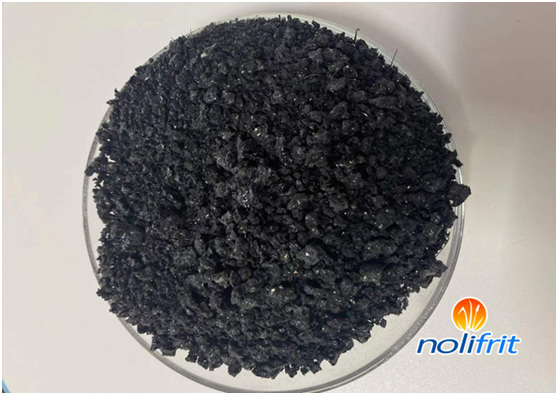Two Coating And One Firing Process
The two-coating and one-firing process has the outstanding advantages of reducing enamel loss, reducing pollution, reducing energy consumption, and saving costs. Today, three mature two-coating and one-firing processes are introduced. Interested enamel manufacturers recommend collection.
There are three combinations of two coating and one firing: dry ground coat-dry cover coat, wet ground coat-dry cover coat, and wet ground coat-wet cover coat.

1. Dry process ground coat and dry process cover coat.
The two coating and one firing process with dry process ground coat and dry process cover coat use electrostatic spray enamel, and the iron blank is required to use zero-carbon steel, and its carbon content is generally lower than 0.008%. and other defects. The pretreatment of blanks is stricter than the common wet process. In addition to degreasing, pickling, and neutralization, it is also required to be cleaned with pure water. The best pretreatment process is spray cleaning.
Process: Degreasing - Water Washing - Hot Pickling - Cold Pickling - Water Washing - Secondary Degreasing - Water Washing - Neutralization - Pure Water Washing - Drying.
2. Wet process ground coat and dry process cover coat.
Low carbon steel (0. 03%~0. 08%) can be selected as the steel. The ground coat is thinner than the traditional ground coat, and it needs to be dried after the ground coat is sprayed. The fineness of the ground coat: 1%~2% of the 200 mesh screen.
Ground coat density: 1.45~1.60g/cm³.
Thickness of wet process primer: 40~80μm
Dry method cover coat layer thickness: 30~45μm.
Porcelain enamel supplier have developed a special ground coat, which uses a soft ground coat instead of the traditional hard ground coat, making the ground coat easier to melt than the cover coat, so that the gas can escape in time during the firing process to avoid generation after firing. Black spots, pinholes. In addition to improving the formulation of the ground coat, clay admixtures and other materials were developed to aid in the escape of gases during firing. In order to make the thickness of the porcelain layer uniform, automatic spraying equipment is recommended. The wet ground coat-dry cover coat two enamel one firing process is suitable for the spraying of flat parts with high line speed. However, due to the influence of dry powder, the color of the product will be limited.
3. Wet process ground coat - wet process cover coat.
Wet ground coat-wet finish application was developed after wet ground coat-dry finish and dry ground coat-dry finish application. The primer can be obtained by electrostatic wet spraying or electrophoresis to obtain a fairly uniform film thickness. After the ground coat is wet sprayed, the cover coat can be sprayed without drying. The characteristics of the ground coat are similar to the technical requirements of the wet ground coat and the dry cover coat. However, in the wet ground coat-wet cover coat process, the thickness of the ground coat needs special treatment to avoid bubbles during the firing process. Wet-processed primers contain various clays and some organic materials that contribute to the escape of gases during firing. The choice of cover coat is also very important and needs to be compatible with the ground coat. During the firing process, the cover coat needs to have a higher melting temperature to ensure that the gas generated when the ground coat is fired can escape smoothly. Typical cover coat properties are as follows:
Enamel slurry fineness: Bayer sieve 2.0~6.0 grid (200 mesh sieve remaining 1%~2%).
Density: 1.70~1.72g.
Application thickness: 120~140μm.
In short, the second enamel and one firing process can greatly improve production efficiency, reduce energy consumption, enamel material consumption, labor, and greatly reduce pollution.